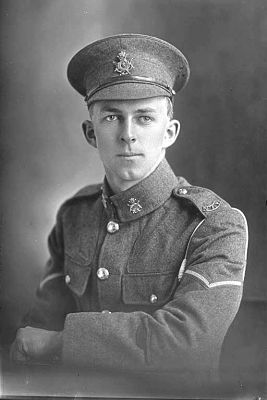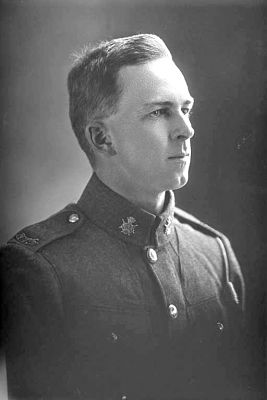WW1 Andrew Royden Erickson 12160
Andrew Royden Erickson (Service number 12160) was born 20 October 1895 in Auckland, the son of Andrew and Mary Erickson, 11 Grey Street, Devonport and Wellesley Street, Auckland.
He attended Devonport School, Auckland Grammar School, Auckland University College (University of Auckland), was a member of the College Rifles Rugby Football Club in Remuera and was in its Signal Corps of the Auckland Cadets for six years before enlisting.
At Auckland Grammar School in 1910 he won the second prize for Mathematics and Science and a certificate in English, and in sport was placed in the 100yds and 400 yds under 15s. Through his time with the College Rifles cadet unit, he gained mastery in shooting. In 1912 he represented the school in the Empire Junior Match and in the shooting match Past v Present. In 1916 he passed the Solicitors’ General Knowledge and Medical Preliminary examinations. He was a member of the team which brought the Natal Shooting Shield to New Zealand.
On enlistment he was working as a Law Clerk with Bamford and Brown Solicitors, Grey Street, Devonport, Auckland. [1] On attestation on 6 July 1915, he was described as 5ft 8ins tall, of fair complexion, with brown eyes and brown hair, but his enlistment was deferred until 16 September 1915 when he was declared fit for service. Like many members of College Rifles, he was an officer, a Warrant Officer Class 2 in the 1st Battalion, New Zealand Rifle Brigade. [2]
On 6th May 1916, he embarked from Wellington on the vessel Mokoia, arriving at Suez, Egypt on 21 June 1916 as a Sergeant, 3rd Reinforcements, 3rd Battalion, G Company, New Zealand Rifle Brigade. In July 1916 he sailed from Egypt and arrived in Southampton on 7 August 1916. Andrew was posted to Sling, on the Salisbury Plains, the main New Zealand camp of hospitals, depots and offices established to train the servicemen. Andrew had a special aptitude as a shooter and was training servicemen in advanced Musketry (the use of all types of small arms for battle) at Hayling Island near Southampton, the only New Zealander in a class of 53 experts, one from each division of the British Army in France, and he came out first in the total for four courses.
On the 9 September 1917 as Company Sergeant-Major, he was posted to the Western Front to Etaples, France. In France he spent the winter of 1917 in the front line at Ypres. He won a Championship Cup for shooting in France with a score of 54 out of a possible 55. In October 1917 he was wounded at Passchendaele, hospitalised and returned to his battalion in November 1917. It was at the battle for Passchendaele where the New Zealand Forces suffered the most horrendous cost of lives. [3,4] In December 1917, at nearby Polderhoek (Poelzelhoek), the New Zealand Forces suffered another costly setback. By the time they were finally withdrawn from the Ypres salient front line in February 1918, the New Zealanders had suffered more than 18,000 casualties.
The Auckland Grammar School Chronicle reported Andrew had been in the long march to the Rhine in charge of Headquarters Details in 1919. He was Company Sergeant Major, Senior Musketry Instructor, 1st Battalion, New Zealand Rifle Brigade, 12th Reinforcements. [1] On 7 January 1919, he reported to hospital sick, which developed into rheumatic fever and then septicaemia. Andrew died on 12 February 1919, age 23, at the No 7 Stationary Hospital British Expeditionary Force in Boulogne, France. His death was personally notified to his parents by the nurses at the hospital: Nursing Sisters Clements, Keys, and Dalrymple, and Chaplain Ralph Street.
The Cemetery in which he is buried is Terlincthun British Cemetery, Wimille, Pas-de-Calais, France, Grave reference XIII. D. 13 He is remembered on the
• Roll of Honour, College Rifles, Rugby Union Football & Sports Club, 33 Haast Street, Remuera, Auckland
• Devonport War Memorial, Devonport, Auckland, New Zealand
• Roll of Honour, Devonport Primary School, granite tablet, 18 Kerr Street, Devonport, Auckland


